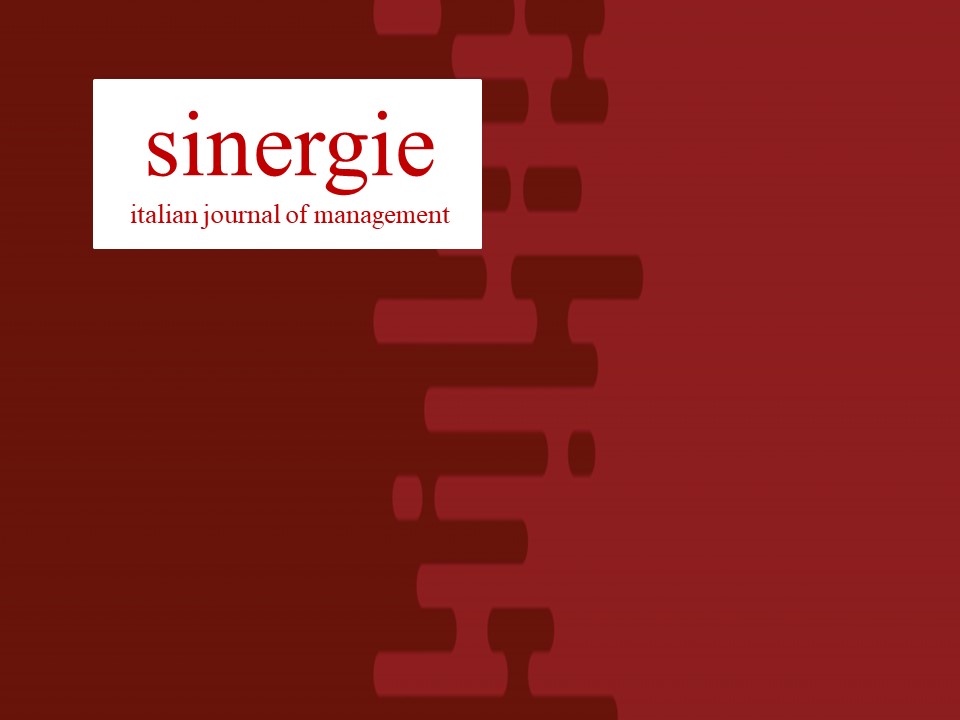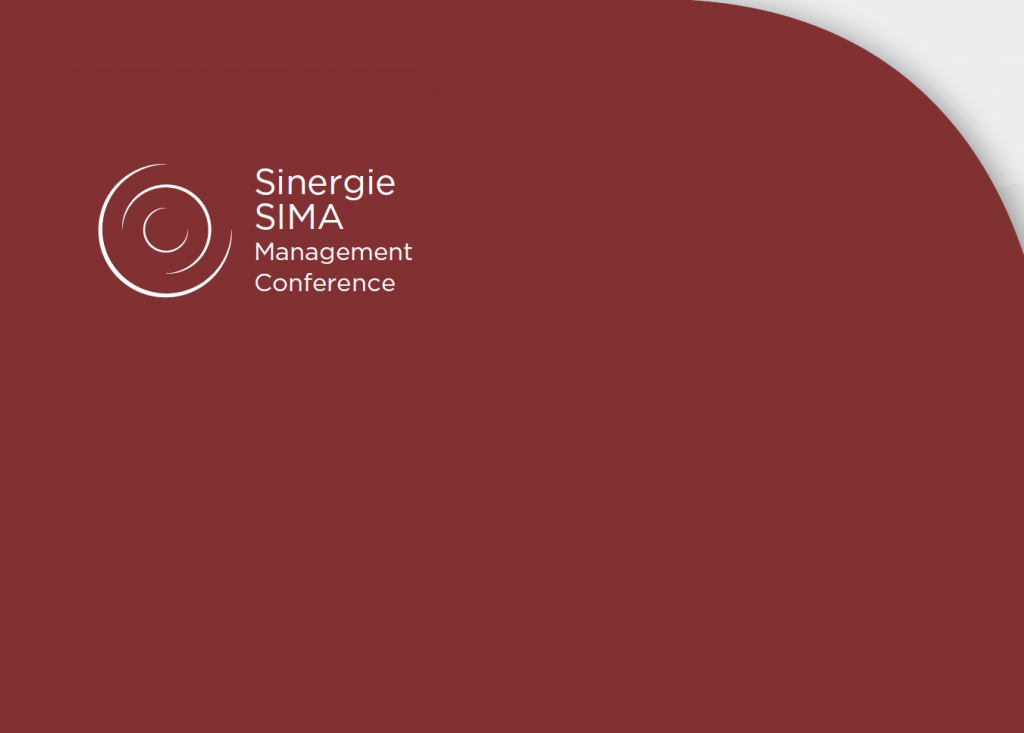Il ruolo del sito web nell'esperienza turistica: Il caso delle agenzie viaggi in Italia
Obiettivo del paper: Obiettivo del paper analizzare limpiego della comunicazione online delle agenzie viaggi italiane e di capire, di conseguenza, se gli intermediari turistici per eccellenza utilizzano siti web raramente aggiornati, solo per essere presenti nelluniverso digitale o se, al contrario, presentano pagine web che sfruttano, in maniera consapevole, le opportunitofferte oggi da internet.
Metodologia: Dopo aver individuato le principali metodologie impiegate dalla letteratura economica per valutare la qualitdei siti web, la seconda parte del lavoro presenta un modello di analisi costruito per studiare lefficacia della comunicazione online di 400 agenzie viaggi italiane. Il modello utilizzato si basa sulla scomposizione del processo di acquisto del turista in tre fasi: sogno, emozione e ricordo.
Risultati: I risultati della ricerca mostrano un generalizzato sotto utilizzo della comunicazione online ed uno scarso interesse verso la costituzione di relazioni stabili e fidelizzate con i propri clienti.
Implicazioni pratiche: Il modello elaborato nel paper si presta per essere utilizzato come strumento per valutare lefficacia della comunicazione web delle agenzie viaggi e pucostituire un aiuto per definire interventi operativi per colmare le criticitdei siti web degli operatori turistici.
Limiti: Il principale limite di questo lavoro rappresentato dalla mancanza di unanalisi delleffettivo uso dei siti web da parte dei turisti.
Originalità del lavoro: Lutilizzo di un database dettagliato di 400 agenzie viaggi e la costruzione di un modello di valutazione dellefficacia della comunicazione online possono costituire interessanti elementi di originalità
Riferimenti bibliografici
ALADWANI A. M., PRASHANT C. P. (2002), Developing and validating an instrument for measuring user-perceived web quality, Information & Management, vol. 39, n. 6, pp. 467-476.
BELANCHE D., CASALO L. V., GUINALIU M., (2012), Website usability, consumer satisfaction and the intention to use a website: the moderating effect of perceived risk, Journal of retailing and consumer services, vol. 19, n. 1, pp. 124-132.
BIELLA A., BORZINI G. (2004), Levoluzione del sistema agenziale verso la vendita online, Franco Angeli, Milano.
BRUNETTI F., TESTA F., UGOLINI M. (2005), Il cliente nellagenzia viaggi, Sinergie, n. 66, pp. 181-211.
CASALO L., FLAVIAN C., GUINALIU M. (2008), The role of perceived usability, reputation, satisfaction and consumer familiarity on the website loyalty formation process, Computers in Human behavior, vol. 24, n. 2, pp. 325-345.
CEBI S. (2013), A quality evaluation model for the design quality of online shopping websites, Electronic Commerce Research and Applications, vol. 12, n. 2, pp. 124-135.
CHEN Q., RODGERS S., HE Y. (2008), A critical review of the e-satisfaction literature, American Behavioral Scientist, vol. 52, n. 1, pp. 38-59.
CHIOU W., LIN C., PERNG C. (2010), A strategic framework for website evaluation based on a review of the literature from 1995-2006, Information & Management, vol. 47, n. 5-6, pp. 282-290.
CHIOU W., LIN C., PERNG C. (2011), A strategic website evaluation of online travel agencies, Tourism Management, vol. 32, n. 6, pp. 1463-1473.
CHUAN-CHUAN LIN J., LU H. (2000), Towards an understanding of the behavioral intention to use a Website, vol. 20, n. 3, pp. 197-208.
CHUNG J., TAN F. B. (2004), Antecedents of perceived playfulness: an exploratory study on user acceptance of general information searching websites, Information & Management, vol. 41, n. 7, pp. 869-881.
COLLESEI U., CASARIN F., VESCOVI T. (2001), Internet e i cambiamenti nei comportamenti dacquisto del consumatore, Micro & Macro marketing, n.1, pp. 33-50.
COSTABILE M., RICOTTA F., MICELI G. (2004), La personalizzazione dellofferta in ambienti digitali: un modello per il dynamic profiling dei clienti online, working paper, Universit della Calabria, (Campus di Arcavacata – Cosenza), Dipartimento di scienze aziendali, anche in Economia & Management, n.1, 2005, pp. 1-31).
DICKINGER A., STANGL B. (2013), Website performance and behavioral consequences: A formative measurement approach, Journal of Business Research, vol. 66, n. 6, pp. 771-777.
FORLANI F. (2005), Marketing, esperienze e territorio, Tesi di dottorato in Impresa e mercato, Universit degli studi di Genova, non pubblicata disponibile allindirizzo: http://www.uniurb.it/lingue/ matdid/forlani/2006-07/.
GENTILE R. (2007), Vendere viaggi in Italia, Hoepli Editore, Milano.
GILMORE J.H., PINE II B.J. (1999), The experience economy, Harvard Business School Press, Boston.
GOLINELLI G. (2000), Lapproccio sistemico al governo dellimpresa – Limpresa sistema vitale, Cedam, Padova.
HERNANDEZ B., JIMENEZ J., MARTIN M. (2009), Key website factors in e-business strategy, International Journal of information management, vol. 29, n. 5, pp. 362-371.
HU Y.C. (2009), Fuzzy multiple-criteria decision making in the determination of critical criteria for assessing service quality of travel websites, Expert Systems with Applications, vol. 36, n. 3, pp. 6439-6445.
INVERNIZZI E. (2003), Introduzione a P. Kotler in Kotler, P., Bowen J., Makens J., Marketing nel turismo, McGraw-Hill, Milano.
KIM J., JIN B., SWINNEY J. L. (2009), The role of retail quality, e-satisfaction and e-trust in online loyalty development process, Journal of retailing and Consumer services, vol. 16, n. 4, pp. 239-247.
KIYAVITSKAYA N., ZENI N., MICH L. (2011), Semantic annotation for assessing website communicative efficacy, Information Technology & Tourism, vol. 12, n. 4, pp. 331-344.
LAW R., QI S., BUHALIS D. (2010), Progress in tourism management: a review of website evaluation in tourism research, Tourism Management, vol. 31, n. 3, pp. 297-313.
LEE Y., KOZAR K. (2012), Understanding of website usability: specifying and measuring constructs and their relationships, Decision Support System, vol. 52, n. 2, pp. 450-463.
LI F. (2011), Usability evaluation of e-commerce on B2C websites in China, Proceeding of the The sixth Wuhan International Conference on E-business. China, Zhengzhou. Institute of Aeronautical Industry management, 2007, pp. 53-59.
LOIACONO E., WATSON R., GOODHUE D. L. (2007), WebQual: An instrument for consumer evaluation of web sites, International Journal of Electronic Commerce, vol. 11, n. 3, pp. 51-87.
MICH L., FRANCH M., GAIO L. (2003), Evaluating and designing web site quality, Multimedia IEEE, vol. 10, n. 1, pp. 34-43.
MICH L., MARTINI U., MENAPACE M. (2004), Un approccio modulare alla valutazione della qualit dei siti web delle destinazioni turistiche, Universit di Trento, Quaderno DISA, vol. 18, n. 35, pp. 87-103.
MICH L., FRANCH M., MARTINI U. (2005), A modular approach to quality evaluation of tourist destination web sites: The quality model factory, Information and Communication Technologies in Tourism 2005, n. 17, pp. 555-565.
MICH L. (2007), La valutazione della qualit dei siti web, in La comunicazione turistica. Viaggi reali e virtuali fra storia e turismo, Edizioni Kappa, Roma, pp. 403-414.
MICH L., FRANCH M. (2007), Un approccio multi-step per la valutazione dellusabilit del sito web di una destinazione turistica, in Atti di: SIMKTG Il marketing dei talenti: Marketing e Tecnologia,24-25 Novembre 2007, Parma, pp. 1-28.
NASRUL M. A., NOR K., MASROM M., SYARIEF A. (2012), Website Fit: an overview, Procedia – Social and behavioral Sciences, n. 40, pp. 315-325.
O’ CASS, A., CARLSON, J., (2012), An empirical assessment of consumers evaluations of web site service quality: conceptualizing and testing a formative model, Journal of Services Marketing, vol. 26, n. 6, pp. 419-434.
OLSINA L., LAFUENTE G., ROSSI G. (2001), Specifying quality characteristics and attributes for websites, Lecture notes in Computer Science 2016, Web Engineering: Managing University and Complexity of web application development, S. Murugesan and Y. Deshpande, eds., Springer-Verlang, pp. 266-277.
OLSINA L., ROSSI G. (2002), Measuring Web application quality with WebQEM, MultiMedia IEEE, vol. 9, n. 4, pp. 20-29.
PARK Y.A., GRETZEL U. (2007), Success factors for destination marketing websites: a qualitative meta-analysis, Journal of Travel Research, vol. 46, n. 1, pp. 46-63.
PENCARELLI T. (2003), Letture di economia e management delle organizzazioni turistiche, Edizioni Goliardiche, Udine.
PENCARELLI T., CIOPPI M. (2008), La comunicazione di marketing nelle piccole e medie imprese: alcune evidenze empiriche, paper presentato al convegno Marketing Trends, Venezia.
POLIZZI G. (2010), La comunicazione della destinazione turistica al tempo di Internet, McGraw-Hill, Milano.
SANCHEZ-FRANCO M. J. (2010), Virtual travel communities and customer loyalty: customer purchase involvement and website design, Electronic commerce research and applications, vol. 9, n. 2, pp. 171-182.
SCAGLIONE M., SCHEGG R., MURPHY J. (2009), Website adoption and sales performance in Valais hospitality industry, Technovation, vol. 29, n. 9, pp. 625-631.
SCHMIDT S. CANTALLOPS A.S., DOS SANTOS C.P. (2008), The characteristics of hotel websites and their implications for website effectiveness, International Journal of hospitality management, vol. 27, n. 2, pp. 504-516.
SIGALA M. (2011), Evaluating Website design and structure in tourism: dimensions, stakeholders and marketing issues, Journal of hospitality marketing & management, vol. 20, n. 7, pp. 691-694.
WHITE C., RAMAN N. (1999), The world wide web as a public relations medium: the use of research, planning and evaluation in website development, Public Relations review, vol. 25, n. 4, pp. 405-419.
YEN B., HU P.J. H., WANG M. (2007), Toward an analytical approach for effective web site design: A framework for modeling, evaluation and enhancement, Electronic Commerce Research and Applications, vol. 6, n. 2, pp. 159-170.


